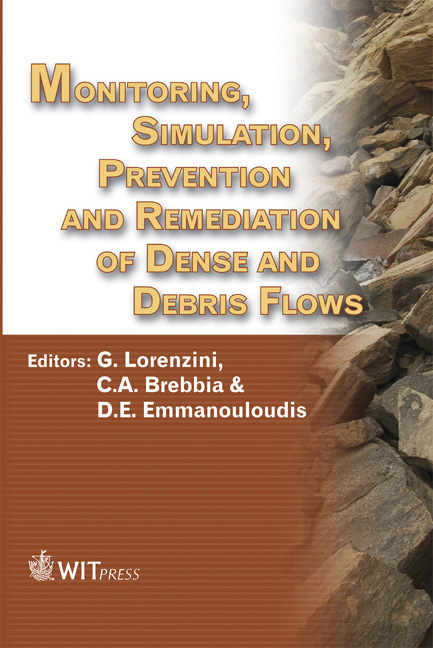A Study On Debris Flow Disasters Along Japanese Railways And Its Critical Rainfalls
Price
Free (open access)
Transaction
Volume
90
Pages
10
Published
2006
Size
1,998 kb
Paper DOI
10.2495/DEB060331
Copyright
WIT Press
Author(s)
S. Watanabe, T. Sugiyama, O. Nunokawa, T. Fujii, K. Okada & H. Mitsunaka
Abstract
In the year 2004 in Japan, a huge number of disasters occurred due to heavy rainfalls during annual rainy seasons, and typhoons hit in Japan more than ever. An area on the Yosan line in Shikoku Japan Railway suffered especially from serious slope failures after being hit four times by Typhoons. In this paper, we introduce an example of the debris flow that took place in the area; and clarify the causes of such disasters in view of the geological and geographical features of the area. It also shows that an evaluation of the critical rainfalls, which caused debris flow with an analysis of rainfalls observed at that time. Keywords: debris flow, maximum hourly rainfall, continuous rainfall, critical rainfall. 1 Introduction In Japan, most railways suffered from severe natural environments such as heavy rainfalls due to typhoons and annual rainy season causing slope failures. In order to secure safe train operations during such heavy rainfalls, the railways have imposed strict operational restrictions to prevent presumable accidents. Despite a large number of natural disasters occurred in the past, grave accidents i.e. derailments and vehicle overturning have scarcely occurred by appropriate operational restrictions. In the year of 2004 in Japan, heavy rainfalls due to annual rainy season and typhoons caused a huge number of disasters. Especially, the area on Yosan line under jurisdiction of Shikoku Japan Railway Company suffered from serious slope failures four times due to Typhoons.
Keywords
debris flow, maximum hourly rainfall, continuous rainfall, critical rainfall.





